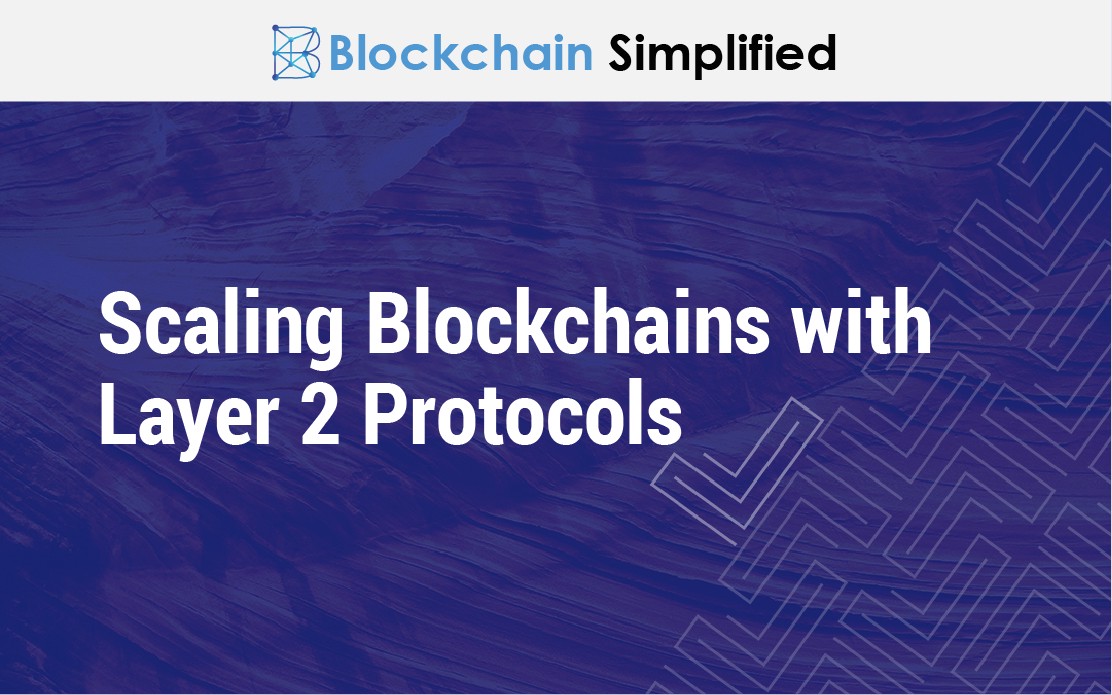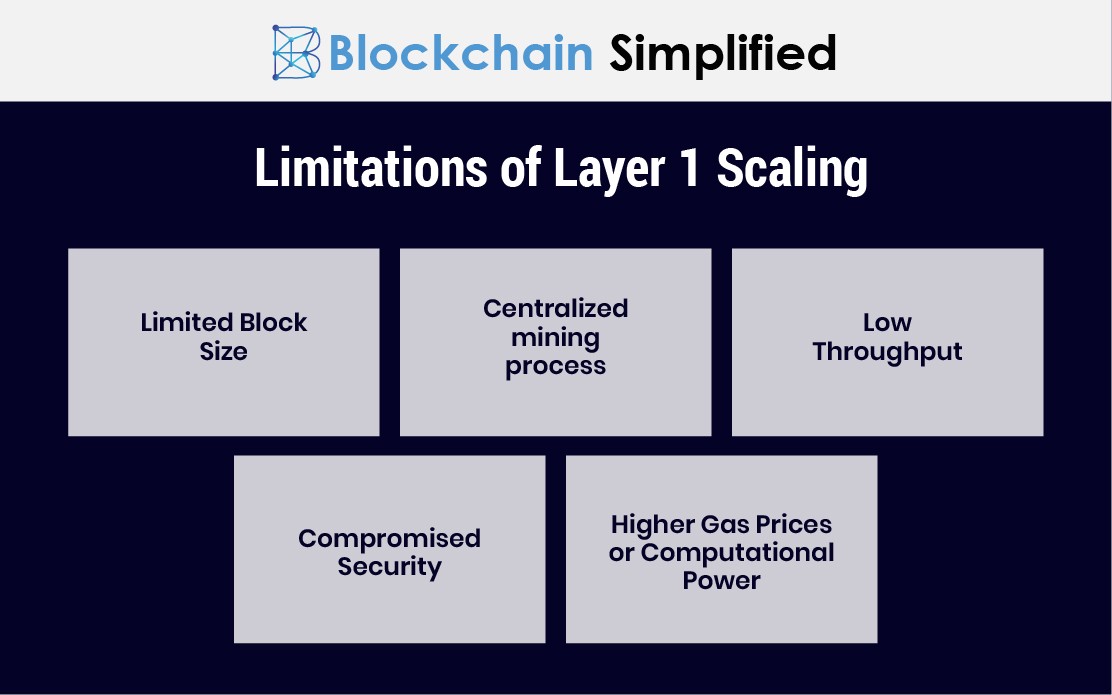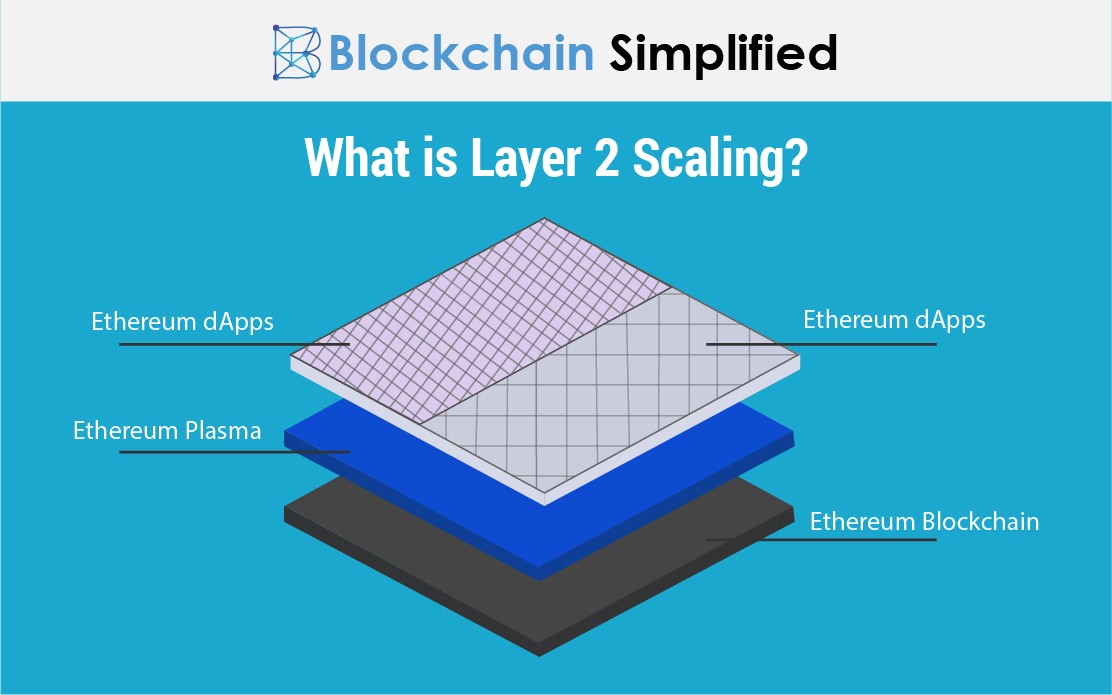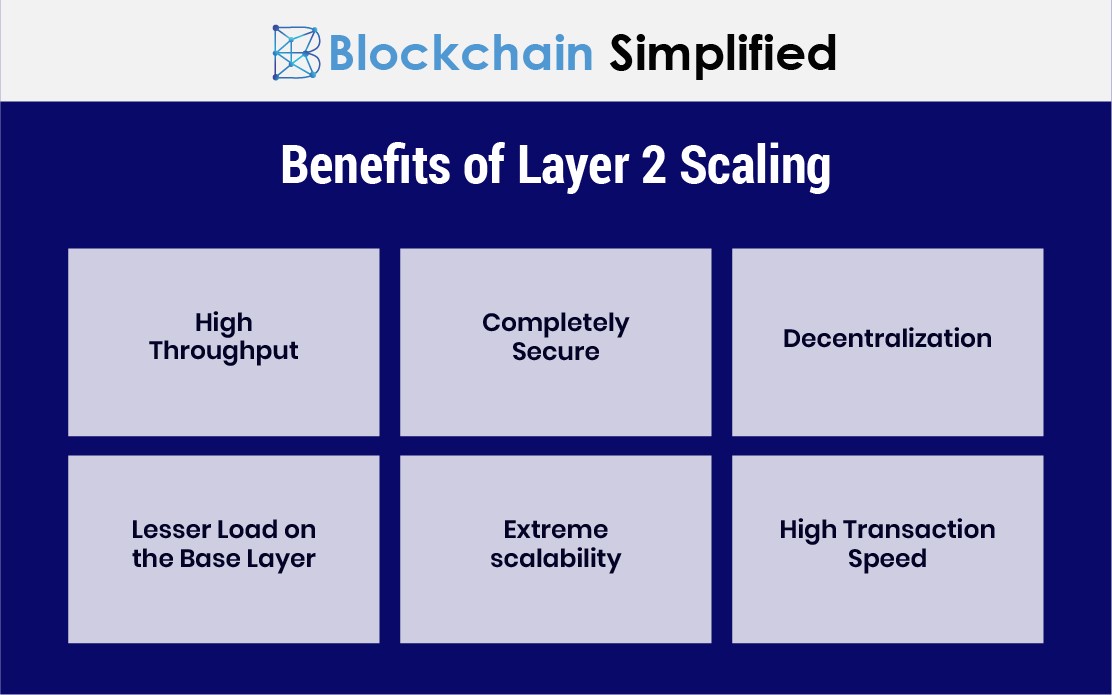Scaling Blockchains with Layer 2 protocols

While Blockchain’s features surpass its limitations, Scalability remains its biggest drawback that is making people skeptical about accepting it. Scalability of a system is defined as its capacity to continue working efficiently even when huge volumes of traffic are involved. Due to the absence of load balancing, the Blockchain layer is forced to carry out all the processes alone, which makes the system slow and inefficient. Although Sharding as a concept does solve this problem to a certain extent, blockchain’s native limitations still don’t completely support it to make it successful.
As an alternative, Root blockchains are also one of the solutions that could solve these issues, but they tend to be more centralized which defeats the very purpose of implementing Blockchain i.e. decentralization.
(https://blockchainsimplified.com is a top offshore blockchain development company in Pune, India.)
Limitations of Layer 1 Scaling
Layer 1 or Base Layer is the main or the only Blockchain layer in a system that is responsible for every task or process that the system needs to perform.

Limited Block Size & Centralized Mining Process
In order to achieve scalability, either the Layer 1 has to be horizontally scaled by adding more nodes to the existing Blockchain network or it has to be vertically scaled by increasing the power of the existing nodes i.e. increasing their size. While adding more nodes is anyway going to make the system slow since every node has to perform computations, the only way is to vertically scale the system. This means that only systems with more power can operate in the network to validate and less powerful cannot participate in the validation process. This makes the mining process more centralized as validating power remains only with few nodes.
Low Throughput
In the process of adding more nodes to Layer 1, the speed of the system is compromised and the network becomes slow. Transactions are stuck or delayed making the network completely inefficient.
Compromised Security
A blockchain network is more secure when there are more validator nodes. More validator nodes means more affirmations and more decentralization. If Layer 1 is scaled either by vertical or horizontal scaling, then the power of validation is restricted to only powerful nodes making the system insecure and centralized.
Higher Gas Prices or Computational Power
In the case of Ethereum, more traffic means more transactions and more transactions means more computational power to process. This results in higher gas prices to carry out mining.
Thus, Layer 1 Scaling means compromising on every aspect of Blockchain i.e. Decentralization, Security and Speed.
(Visit us at https://blockchainsimplified.com to hire blockchain developers. We are an offshore blockchain development company based out of Pune, India)
Getting started with Layer 2 Blockchain Scaling

Layer 2 Blockchains are built on top of Layer 1 and are called as “off-chain” solutions. Layer 2 Blockchains are built in a way such that network operations get divided between Layer 1 and Layer 2 blockchains. Layer 1 is thus off-loaded with fewer operations by Layer 2, thus freeing up its resources. Transactions are processed at exponential speed as secondary activities take place on the Layer 2 blockchain. The system becomes easily scalable even when approached with tonnes of network traffic. While dApps are on top of both the layers, Smart Contracts generally reside on the Layer 1 and communicate with the Layer 2 whenever need be.
High Throughput & Higher Transaction Speed
Layer 2 blockchains, by taking the load of some activities of the base layer or Layer 1 blockchain, make way for faster transactions and high throughput.
Completely Secure & Decentralized
By introducing a Layer 2 Blockchain, there is no need of adding more nodes to the existing base layer to achieve horizontal scaling. The base layer can operate seamlessly with the existing nodes that can participate in validation and achieve decentralization. More the chain is decentralized, the more secure it is.
Lesser Load on the Base Layer & Extremely scalable
Layer 2 Scaling reduces the load on the base layer by managing many activities on its own, thus enabling layer 1 to process more transactions than normal and making it more scalable.

Some popular examples of Layer 2 Blockchain scaling protocols are Lightning Network for Bitcoin, Ethereum Plasma , Matic Network, Raiden etc.
Read our blog on Matic Network.
About Blockchain Simplified
Blockchain Simplified is a Top blockchain development company in Pune - India which works on all major Blockchain requirements. We specialise in Blockchain, Web and Mobile development (One Stop Shop for all technology development needs).
Our clientele includes Multiple Funded Start - Ups, SMBs and few MNCs few of which are NASDAQ and NSE listed.
Some of our work includes,
Blockchain based-
hubrisone.com - is a Live app with 100,000+ downloads, All-in-One Cryptocurrency current account. The entire development from scratch carried out by Blockchain Simplified.
All in one Platform - Complete responsibility of entire software development of the platform ,for a $1m funded blockchain start up, led by a team of serial entrepreneurs and tech veterans in Silicon Valley.
Well funded Blockchain startup - Blockchain Simplified helped a $6m funded American Blockchain startup to build the first blockchain protocol to leverage on-chain smart contracts to manage distributed storage of application data off-chain.
Multinational Bank - The company helped one of the top 3 ranking Multinational Banks to integrate various cryptocurrencies into their banking application.
and more…
Non-Blockchain-
SHC - Built entire platform and app from scratch for a $1m funded startup led by a team of Americans including PhD degree holders.
VMW - Developed app for a multi-national company providing mass factory-to-factory shipment services. App is being used by 53 of the Fortune 500 companies such as John Deere, Coca-Cola, Nissan.
and more…
Expertise
Blockchain Development : Bitcoin, Ethereum, Hyperledger, Corda, and more.
Mobile App Development : Android Native, iOS Native, React Native, Flutter, Xamarin.
UI/UX Design : Strategy, Planning, UI/UX Design, Wireframing, Visual Designs.
Web App Development : Node.JS, Angular, React.JS, PHP.
Backend Development : MongoDB, MySQL, AWS, Firebase.
Visit our official website https://blockchainsimplified.com/ for more information.